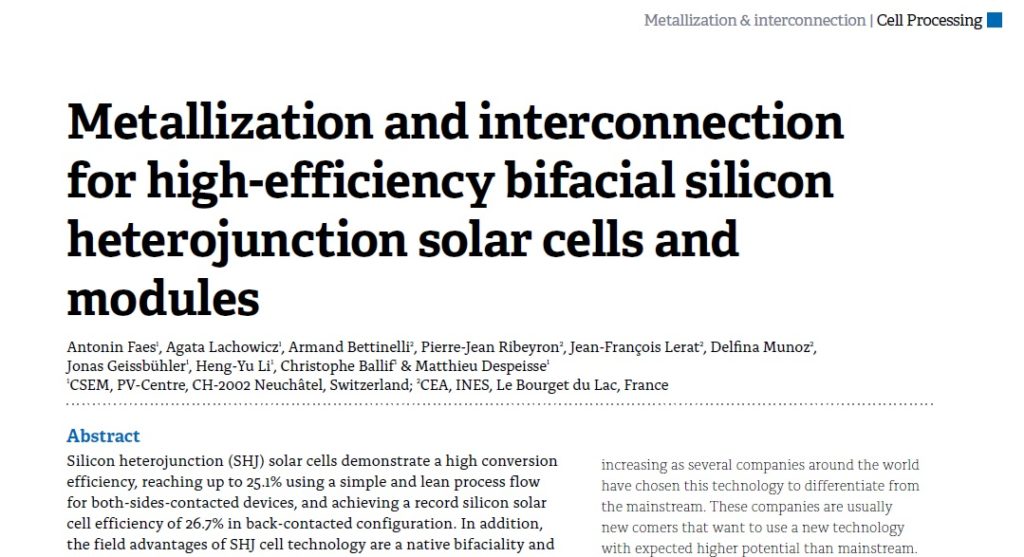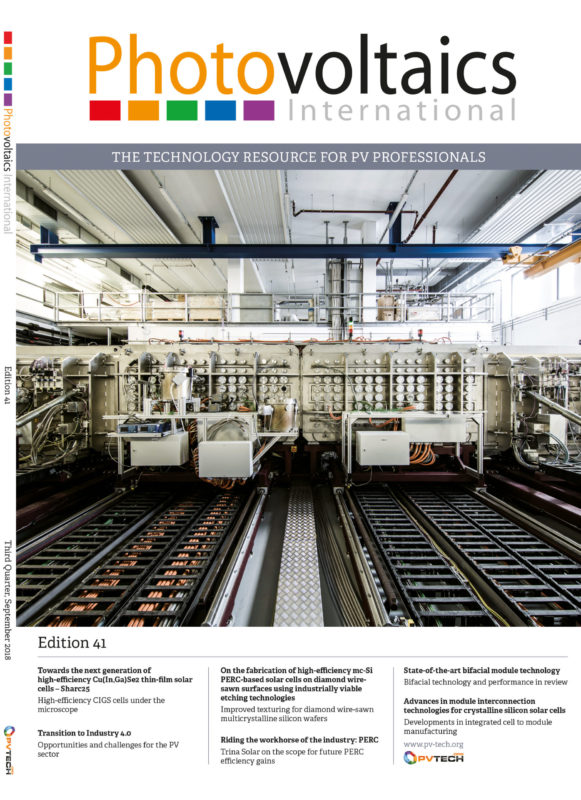By Antonin Faes; Agata Lachowicz; Armand Bettinelli; Pierre-Jean Ribeyron; Jonas Geissbühler
Silicon heterojunction (SHJ) solar cells demonstrate a high conversion efficiency, reaching up to 25.1% using a simple and lean process flow for both-sides-contacted devices, and achieving a record silicon solar cell efficiency of 26.7% in back-contacted configuration. In addition, the field advantages of SHJ cell technology are a native bifaciality and low thermal coefficient providing impressive energy yield. Finally, the technology demonstrates potential cost reduction as it is perfectly suited for thin wafers integration. The SHJ technology is therefore today triggering strong interest in the PV industry, appearing on the roadmap of different cell manufacturers, with several production lines and pilot lines being installed worldwide. One limiting factor of the technology is related to the metallization: due to temperature restrictions on heterocontacts, the standard firing through silver paste needs to be replaced by low curing temperature paste. This type of pastes yield fingers with higher bulk resistivity (two to three times the one obtained with high temperature cured silver pastes) and lower adhesion after soldering. In this paper, materials, processes and costs figures will be reviewed for the metallization and module integration of SHJ solar cells, with a focus on copper plating benchmarked to silver screen-printing, for varying module interconnection technologies.



